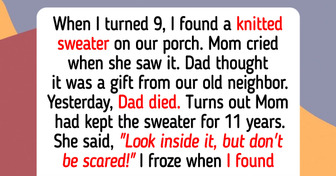My Son Wants to Kick Me Out on the Street to Accommodate His New Family

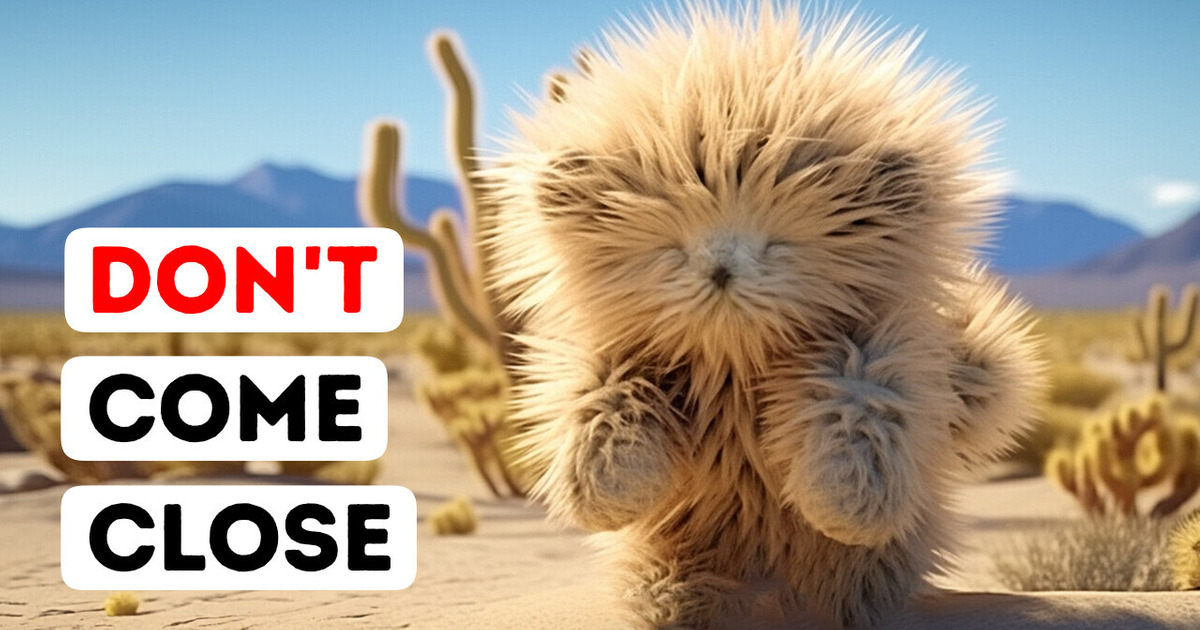
Endless hot deserts seem lifeless at first glance. But among these sands, you can meet dangerous and sometimes creepy creatures. Some of them can only cause health problems, but some can stay in your memory forever. Let’s get to know them, starting with dangerous ones and finishing with real nightmares.
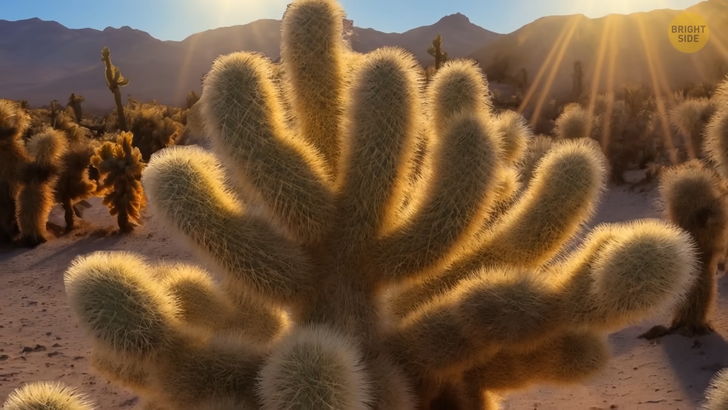
So, you’re walking through a desert and see a big teddy bear with open hands. You understand that it’s probably a mirage, but still, you come closer. You were right. It’s not a plush toy but a giant cactus. There’s something strange about it. Thanks to some strange fluff, the branches resemble the arms of a teddy bear. However, this is not fluff but thousands of thin needles. And they are the reason you shouldn’t come closer. The cactus is called the jumping cholla or teddy bear cholla. It grows in the desert areas of Arizona and in the northern part of Mexico. Don’t worry, this cactus won’t attack you, but it will cling to your skin or clothes if you touch it.
Such a “fur coat” protects the cactus from animals, creates shade, and saves it from heat. The lateral branches are the most important parts of the plant as they carry out photosynthesis and accumulate a large amount of moisture inside. So, despite all the danger, the cactus can be helpful for desert wanderers. And the danger here is needles. If you look closer at them, you will see they have the shape of hooks. One touch, and hundreds of thorns are already in your finger. It’s pretty difficult to get rid of them, and the needles cause unpleasant painful sensations.
But the coolest thing about this cactus is the way it reproduces. The plant clones itself in a new place. When animals and people pass the jumping cholla and touch it, the cactus gives them a small piece of itself along with the needles. As soon as you throw this piece to the ground, it takes root and starts growing.

The degree of danger is rising. The next monster from the desert is running toward us. And that is...an ostrich. Many think these animals are cowards hiding their heads in the sand. You will most likely change your mind if you’re unlucky enough to meet one.
Usually, ostriches are not aggressive, but you should run if you come closer to their nest. On the other hand, you won’t be able to do that because ostriches move at a speed of forty-three miles per hour. You need a car to get away from them. They run and hit their enemy with their chests. There have been cases when ostriches attacked vans and caused significant damage to them.
But the main danger these birds present is their powerful legs with sharp claws. They can deliver strong blows with them and even beat a prone opponent. So yes, if you see an ostrich in the distance, go the other way.
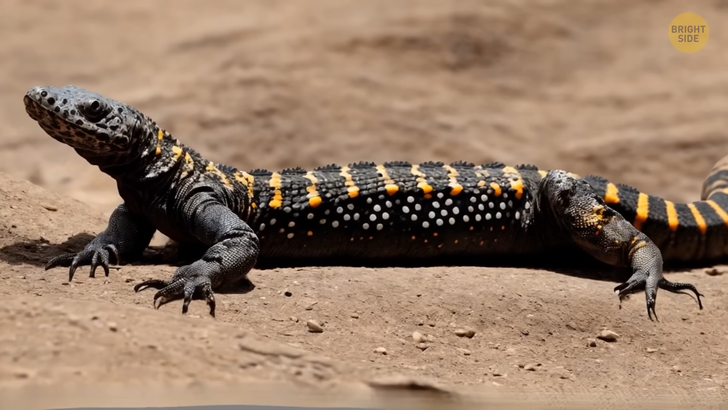
This small spotted lizard lives underground almost all the time in the arid deserts of the southwestern U.S. and northwestern Mexico. Sometimes, it goes outside to find lunch. It only seems cute, but in fact, it’s a dangerous Gila monster. Its thick skin protects the reptile from hawks, coyotes, and other predators. But its main protection is its venom.
Snakes and spiders inject their toxins using long needle-like fangs. The Gila Monster clamps down and chews the prey to spread the venom. And when it bites a person, it can keep its jaws closed for a long time. Getting rid of the animal is a tricky feat. People who have experienced the effects of the venom say it feels as if hot magma passes through the veins. Despite this, the lizard turned out to be useful for science. Doctors used its venom to create medicines for diabetes and obesity.
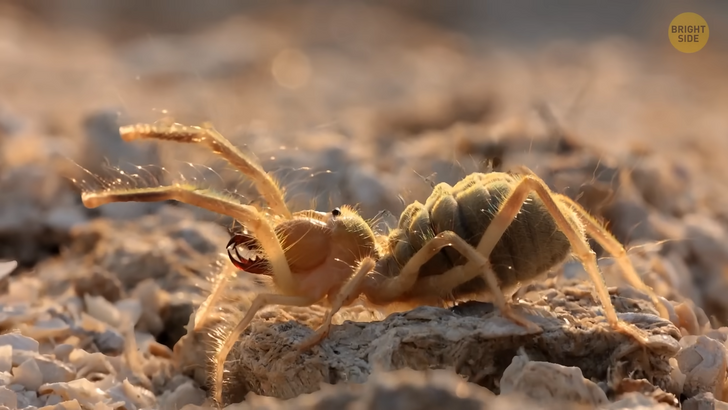
The time has come. Now you’re about to meet one of the creepiest creatures living in the desert. Be quiet and listen to the silence. Stand still. There’s no one around. Suddenly, you hear some hissing coming from below. You lower your head and see it. A big yellow spider the size of a human palm with strong jaws and long legs hides in the shadow of your body.
In horror, you run away from this monster, but it goes after you. It isn’t easy to do it in this situation, but try to calm down. The creature isn’t interested in you. It wants only your shadow to hide from the scorching sun. Anyway, it’s better not to touch it. The powerful jaws of the Camel spider can cause unpleasant sensations, to put it mildly. And by the way, this creature isn’t really a spider. Yeah, it belongs to the class of arachnids, but it’s a separate species — solpugid.
It likes to bite. It’s fearless and pretty aggressive. The spider preys on insects, lizards, rodents, and small birds. It can also move at a speed of ten miles per hour. For their small size, this is very fast. You need to be a professional athlete to run away from it. Most often, you can find camel spiders in the deserts of the Middle East, but they also live in Mexico and the southwestern U.S.
These runners are nocturnal and try to avoid the sun during the day, so they are always hunting your shadow. By the way, they got their name because they often hide in the shadows of camels. You won’t hide from them during the day, but they will also want to come after you at night, especially if you make a fire. Solpugids always run to the light in the hope of eating something. Some species of these spiders make a hissing sound to scare their enemies away.
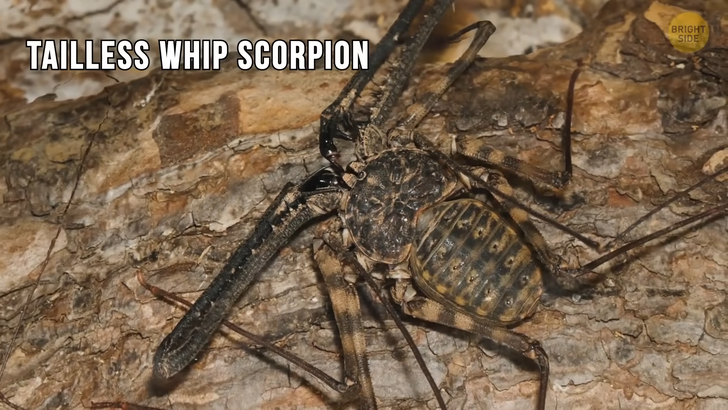
Now let’s calm down for a second and leave the hot desert. We’re going into the humid tropics of Tanzania. Under tree bark, fallen leaves, and in dark caves, you can meet one of the most terrifying creatures on Earth — a tailless whip scorpion. Imagine a big scorpion without a tail with a flat body that looks like it has been pressed by something. It’s similar to spiders but has no venom glands and can’t spin a web.
This monster is silent and fast. But the scariest thing is its two front claws, twice as long as the creature itself. Any prey it catches will never escape. Life in a dark cave has spoiled its eyesight, so the whip scorpion tries to avoid sunlight. During molting, it climbs up to the ceiling and slowly comes out of its old skin. Imagine directing your flashlight there and seeing small cocoons out of which pale spiders with excessively long legs crawl.
If you really meet it, be calm and slowly go away as far as possible. Be careful. The flat scorpion can crawl under your clothes in a second and bite you in the stomach. And that’s not the worst part... Okay, this is a joke. This pretty guy is one of the shiest and most harmless creatures among spiders and scorpions. It’s afraid of you and will never attack.
Many consider it beautiful and keep whip scorpions in glass terrariums. If you want such a pet, carefully watch it so that it doesn’t run away from its house. If it happens, it will be pretty challenging to catch it again. In a matter of moments, it can get under your bed or go through gaps in the floor. Then it’ll go to your neighbor’s apartment through a ventilation system and scare people there.
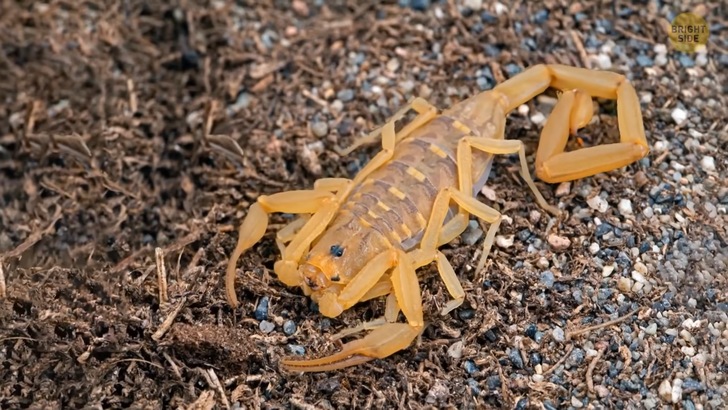
Okay, how about one more scorpion? It’s not as creepy as the other creatures in this video, but it’s the most venomous scorpion in the USA. This is the Arizona Bark Scorpion. The problem is that you can see it in the desert, in your home, or in the yard.
These dangerous venomous beasts crawl into rooms and often sting people. One time is enough to cause pain, similar to a bee sting. But someone with an allergy may experience paralysis, breathing problems, and other health issues.









